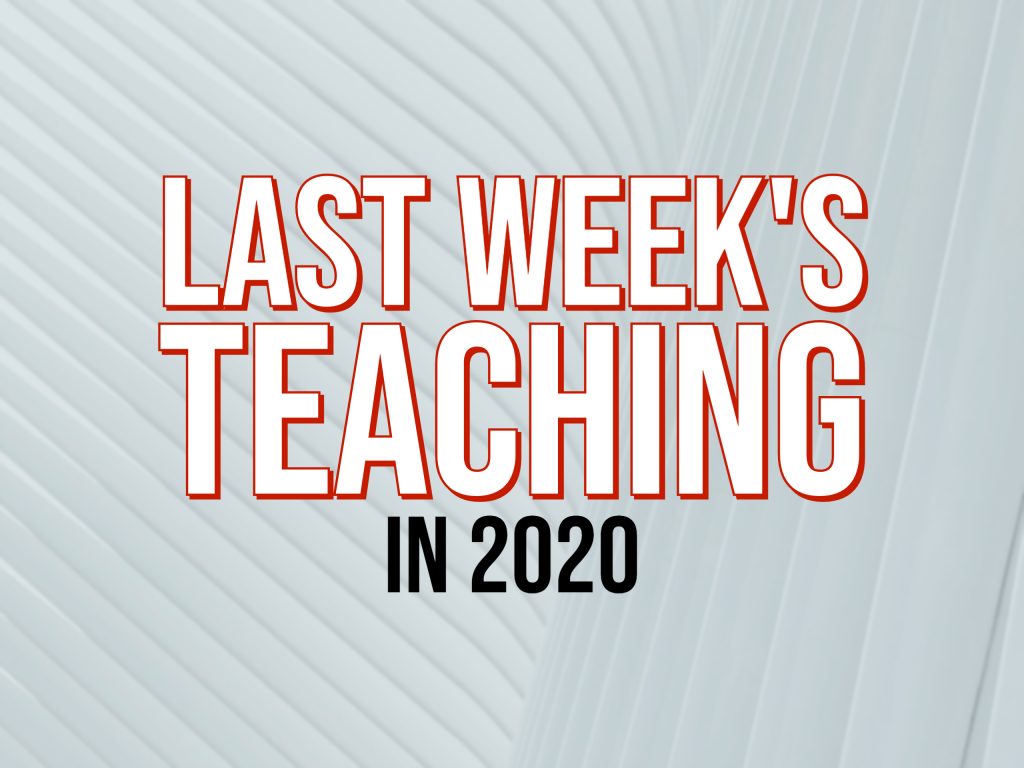 UA faculty describe their experiences teaching during the 2020-2021 academic year. Share your ideas and experiences here, and your entry could be featured in the next episode.
UA faculty describe their experiences teaching during the 2020-2021 academic year. Share your ideas and experiences here, and your entry could be featured in the next episode.
More with Fewer Discussion Threads
Class discussions on Blackboard can become really low-level when my students prompted to “answer the question, and then give a thoughtful response to three classmates.” I can understand why the responses quickly became rote (even with a rubric!). So I tried a few things:
- Use the “groups” feature in Blackboard to create randomized groups of 10.
- Respond to only one other person using “ABC”: acknowledge, build, conclude.
- Simplify the grading rubric. One mark for A, B, and C.
My grading is faster and the responses are better! Sometimes less is more.
Picking up the Slack to Create Community
Slack is a “business communication” platform that I started using to teach graduate student seminars in 2018. I ask students to sign up using their Crimson Gmail accounts. The main attraction is the ability to sustain an ongoing, password-protected conversation about the course in one location (rather than chasing down emails or scrolling through discussion threads). I use the main “channel” to
- Establish the flow of weekly content with links to a UA+Box folder.
- Post prompts for graded, pre-class discussions.
- Require certain assignments to be posted in the channel.
Now, more than ever, Slack seems essential to building community within the seminar.
Zooming Google: Docs, Slides, Draw, Forms
Every student on campus has a Crimson Gmail account. I started using various kinds of Google Drive-based applications during my class sessions. While my mouse drawing skills need improving, I can post links to a diagram or document and ask students to add their content during a lecture or a break. For example, I can
- Ask for the categorization of data using an X and Y axis graph. If the data or the categories are “fuzzy,” I ask students to justify their decisions in the follow-up discussion.
- Provide a table to be completed during a segment of the class session.
- Distribute pre-made files to groups to complete during breakout rooms.
Since their Crimson Gmails include their myBama usernames, I can keep track of individual contributions.
Developing Conceptual Knowledge with Adobe Spark Pages
How do you help students develop their conceptual understanding asynchronously? While it’s useful for students to re-present concepts verbally, I have always experienced limits on how many get to speak and whether I can hear them! (I blame spending my 1980s with a Walkman…) Everyone at UA now has access to Adobe Creative Cloud. Many Adobe products are mind-numbingly complex. Adobe Spark is not. And it works the same on PC, Mac and mobile. This semester, I have experimented with the following process:
- Ask students to identify concepts in our course content for a participation grade (I do have my own list, too!).
- Assign students to create a Spark Page that explains and defines one concept.
- Review the page content during class using my own notes and knowledge.
- Offer bonus points for students to update their Spark Page content.
My untested idea is to embed these pages on Blackboard for test preparation.
Questions about this series? Contact Nathan Loewen at nrloewen@ua.edu.